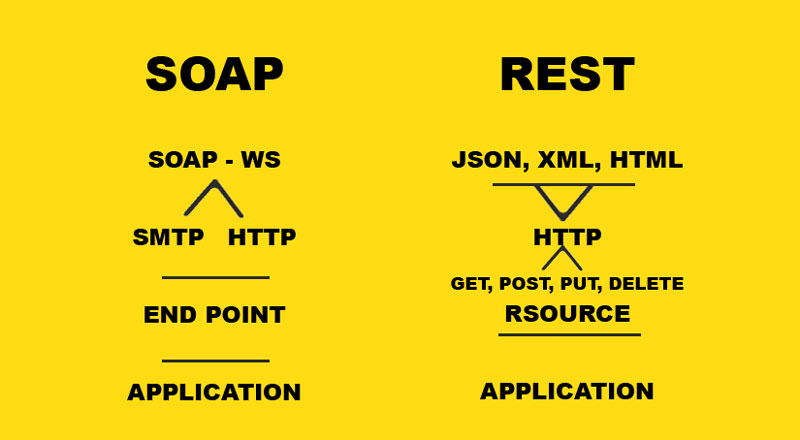

REST was created as an alternative to the restrictions and limitations of SOAP, and therefore has a more flexible architecture. Higher complexity requires more bandwidth and resources which can lead to slower page load times. The REST architecture lays down a set of API guidelines to follow in order to provide a RESTful web service, for example, stateless existence and the use of HTTP status codes.Īs SOAP is an official protocol, it comes with strict rules and advanced security features such as built-in ACID (Atomicity, Consistency, Isolation, Durability) compliance and authorization. As opposed to SOAP, REST is not a protocol but an architectural style. The SOAP specifications are official web standards, maintained and developed by the World Wide Web Consortium (W3C). SOAP is a standardized protocol that sends messages using other protocols such as HTTP and SMTP. REST was created to address the problems of SOAP. SOAP and REST are two different API guidelines that approach the question of data transmission from differing points of view. (If you’re new to structuring an API, start with our best practices for building a user-friendly API). There are also many APIs that have been created privately by companies for internal use. Many popular websites provide public APIs for their users for example, Google Maps has a public REST API that lets you customize Maps with your own content. An API makes it possible to transfer data from an application to other applications, receiving requests and sending back responses through internet protocols such as HTTP, SMTP, and others. SOAP and REST both allow you to create your own API, or Application Programming Interface. The main differences between SOAP and REST

However, enterprise users still frequently choose SOAP for their web services. These days, most public web services provide REST APIs and transfer data in the compact and easy-to-use JSON data interchange format. REST is not a standardized protocol but a set of loose API guidelines that gives more freedom to developers and companies to decide how they want to transfer data over the network and structure their API calls. However, with an increasing need for developers to build lightweight web and mobile applications, the more flexible REST architecture quickly gained popularity. For a long time, SOAP was the go-to messaging protocol that almost every web service used. SOAP is a standardized specification maintained by the World Wide Web Consortium that is used for exchanging structured information in the form of well-defined, secure messages. APIs can use different architectures, such as SOAP and REST, which act as API guidelines to transfer data from the server to the client. The related data is stored on a remote server and transmitted to the client machine through APIs that provide web services for third-party users. In fact, it’s only the front-end interfaces of websites and applications that reside on end users’ devices. Computers use web services to communicate via an internet connection. Web services are responsible for online machine-to-machine communication. The main differences between SOAP and REST.Here are our quick links if you want to jump ahead: In this article, we’ll look into both the SOAP protocol and the REST guidelines in detail and also see how JSON fits into the landscape. Each architectural style has its own use cases, benefits, and limitations. While SOAP and REST are both leading approaches to transferring data over a network using API calls, JSON is a compact data format that RESTful web services can use.ĭeciding whether you should create a SOAP vs REST API is an essential question if you are planning to provide a web service. SOAP vs REST vs JSON are comparisons that are frequently made in discussions about web services. SOAP vs REST vs JSON - a 2023 comparison By Anna Monus | Posted | 14 min.


 0 kommentar(er)
0 kommentar(er)
